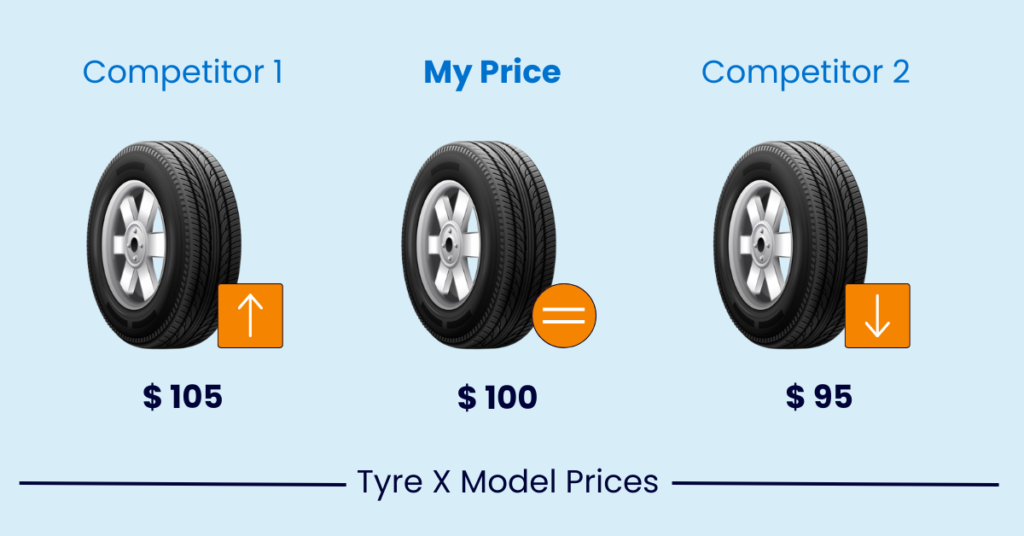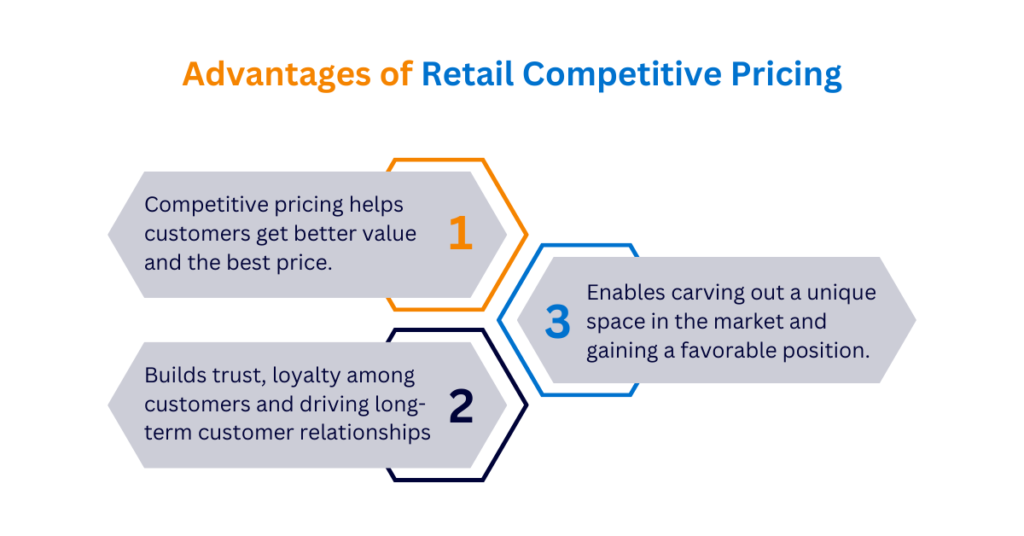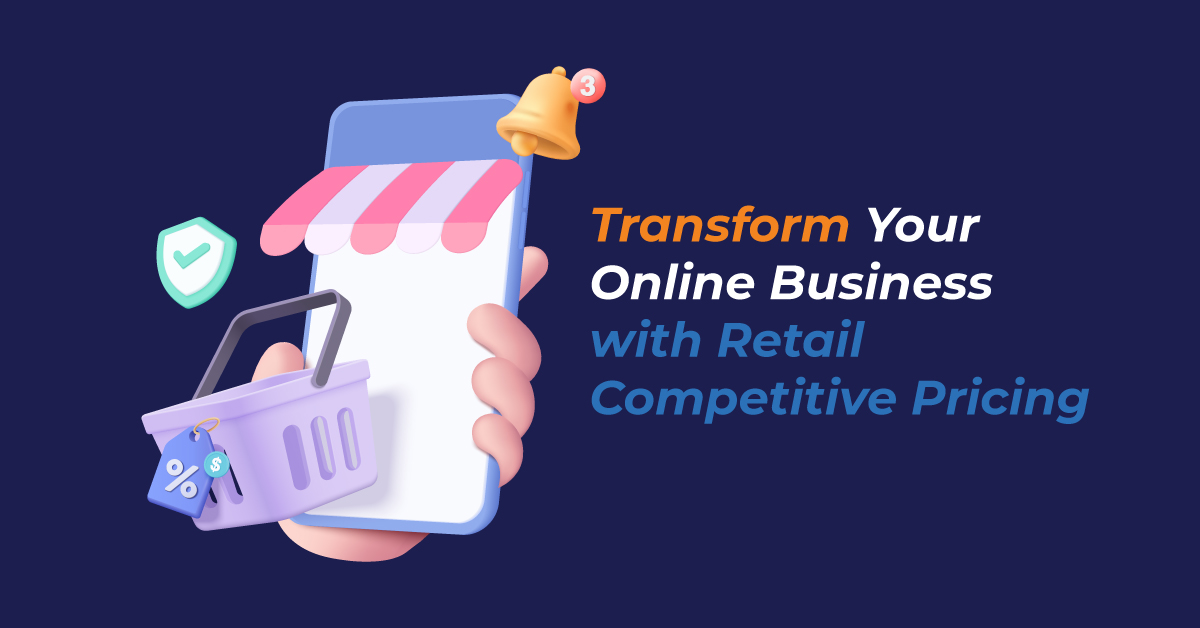It is important for a retailer to price their goods in such a way that they can win against the competition. It is the various pricing strategies that can help a retailer in adapting to the rapid and ongoing changes. It is the constant changes that make it complex to manage the competition-based pricing. Let’s have a detailed look at the significance of retail competitive pricing:
What is Competitive Pricing?
Competitive pricing is the strategy where prices are created based on the prices offered by the competitors. It is about setting the prices at the same level as the competitors so that you don’t lose the buyers. The three types of competitive pricing are low price, high price, and matched price. As the prices are set based on the competitor prices, it is also known as competition-based pricing.
This type of strategy helps in attracting new customers and boosting the sales. It can also help in keeping the existing customers loyal to the brand. Competitive pricing can also be used as a defensive strategy. When a competitor launches a new product at a lower price, you can match the prices for safeguarding your market share.
Competitive pricing involves setting prices for products or services in line with the prevailing market rates to remain competitive. For example, three competitors are offering tyres. Competitor 1 prices their tyre at $105, while competitor 2 offers theirs at $95. To compete effectively, we provide our tyre at $100, positioning it between the two competitors’ prices. This strategy allows me to attract customers with a more affordable option compared to competitor 1 and maintain a competitive edge over competitor 2.

What is Competitive Pricing in Retail?
Retail competitive pricing is that aspect of a retailer’s pricing strategy which is sensitive to the price changes made by the competitor for similar goods in the same market. The competitive pricing strategy suggests how the retailer’s prices should change.
Example of Competitive Pricing is as follows:
A retailer sets a particular price for its products in the store considering the competing retailer’s prices for similar products.
When the competitor changes the price of their product, the retailer should also change the price for staying within the range wherein they can survive the competition based on the rules of retail competitive pricing strategy.
However, it is not that easy to make adjustments based on the competitor’s activity. If a competitor changes the price for their product which is available in various packs, and sizes, the retailer needs to adjust its prices for other pack sizes as well. It will help customers in making comparisons for various sizes and packages of the product.
It is a simple example of how a completion-based pricing strategy works. There are thousands of products and each one of them comes with several rules which show the complexities retailers face. An intelligent pricing strategy can help the retailers.
A retailer can adopt several approaches while formulating the comprehensive pricing strategy such as:
- Cost based pricing
- Value-based pricing
- Competition based pricing
Grouping the retail competitive pricing strategies doesn’t do justice to the pricing strategy as often, a retailer’s pricing strategy consists of all of these up to some extent.
Benefits of Retail Competitive Pricing
We will take you through the compelling benefits of retail competitive pricing:

1. Better Sales and Revenue
When we say that the retail competitive pricing tool offered by WebDataGuru can help you, what we mean is that competitive pricing always helps customers get better value and the best price. This ultimately gains more customers and helps in retaining them for a longer period.
2. Customer Loyalty
This is the one thing that every brand and company wants. Customer loyalty is attained with value addition. And you might be wondering how is that possible. Let us explain. When you gain a customer and give them the best price then, they will perceive that the retailer values their hard-earned money. This helps in hitting the buyer’s psychology in the right manner.
3. Better Market Positioning
Competitive pricing always allows you to have a better market penetration. Leveraging your market position can lead to more enquiries and conversions. This enables you to carve out a unique space in the market and stand out from the crowd.
Why Should Retailers Care About Competitive Pricing?
The pertinent question is why retailers should give importance to retail competitive pricing when there are several aspects of a comprehensive pricing strategy that retailers need to consider when setting the pricing rules for their pricing strategy.
If the retailers don’t create a conscious pricing strategy and fail to have a meaningful approach to competitive pricing, they can lose the opportunity to engage the buyers, stay relevant, and drive revenue.
For creating an effective competitive pricing strategy, a retailer should have an idea about the competitor’s price changes. However, the challenge is managing thousands of prices across many product groups and identifying the bandwidth for constantly revisiting the pricing strategies for reacting to the competitor’s price changes. It is not manually possible to manage the numerous layers of price changes.
It is not easy to manage the task for retailers as it needs vigilance and agility. It is here that technology comes into the picture.
Retail Competitive Pricing Strategy as a Part of the Larger Strategy
Retailers must adopt new technology to effectively create and guide a strategy for ensuring future growth. Technology helps in successfully managing comprehensive pricing strategies. But why does a retail business need a pricing strategy? The reason is that merchants need to go through inflation and fluctuating cost of goods with no time to evaluate the effect of these changes.
Apart from that, they need to assess what the competitors are doing along with managing their brand sentiment. They need to keep the consumers at the center of the decision. Retailers take into consideration a significant data while creating a competitive pricing strategy. It is important that the retailer’s task of defining their competitive strategy reflects in the prices of the products in the stores. The insight gained from the data is valuable only when a retailer can act on them. This means you need
- Insights delivered in real-time which forecast the impact of price fluctuations on the business
- Workflow that enables the price analysts and merchants to focus on the highest priority changes
- AL which intricately manages the rules portfolio
- Prices in the retail store match the retail competitive pricing strategy.
Points to Remember
- It is important for a retailer to catch the right pulse of the competitor’s price changes. It is mandatory before a retailer begins to create an effective competitive pricing strategy.
- Think about the toolset and the approach used for optimizing the comprehensive pricing strategy. It can prove to be a competitive advantage just like the strategy.
- As mentioned above, insights gained from data analysis are only valuable when a retailer is able to act on them. The pricing strategy must reflect the prices which are live in the stores.
It can be challenging to understand the nuances of retail competitive pricing as it is always impacted by what happens in the surrounding environment and consumer choices. However, with the right competition-based dynamic pricing in the online retailing, pricing tools, and efficient use of technology retailers can beat the competition and move towards success. The right tools can make it easy to manage competitive pricing and contribute towards creating a successful pricing strategy for their business.
Tap the Immense Opportunities with Retail Competitive Pricing
Online retail business is tricky and can be made simpler with better tools. Knowing what works and what doesn’t help the most. It propels your sales and revenue, fosters customer loyalty, positions your brand effectively, expands your market share, enables adaptability, and enhances your overall profitability. So, connect, click and request a demo today!

Recent Comments